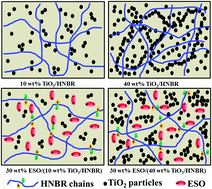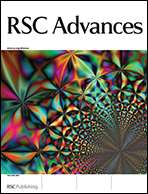Large increase in actuated strain of HNBR dielectric elastomer by controlling molecular interaction and dielectric filler network
Abstract
Titanium dioxide (TiO2) as the high-dielectric-constant filler and a nontoxic, renewable, and biodegradable epoxidized soybean oil (ESO) as the plasticizer were introduced into a hydrogenated nitrile-butadiene rubber (HNBR) matrix to form a dielectric elastomer (DE) with high actuated strain at a low electric field. The results showed that the actuated strain increased from 5.8% for pure HNBR to 13.6% for the 30 wt% ESO/(10 wt% TiO2/HNBR) composite. The increase in actuated strain was due to the increased dielectric constant by the addition of TiO2 and the weakened HNBR molecular interaction with the presence of ESO. In addition, the actuated strain of the 30 wt% ESO/(40 wt% TiO2/HNBR) composite increased by almost 170% over that of the 40 wt% TiO2/HNBR composite at 30 kV mm−1, mainly because of the breaking up of the TiO2 filler network by the addition of ESO, but the greatly weakened HNBR molecular interaction also played a role. The corresponding mechanism was proposed based on the interaction between HNBR and ESO. Furthermore, a relatively high tensile strength (about 6 MPa) was successfully achieved for the 30 wt% ESO/(40 wt% TiO2/HNBR) composite, a big advantage for the practical application of a DE. Our work demonstrated that a filler/polymer DE with a relatively high actuated strain and tensile strength could be successfully achieved by controlling the molecular interaction and dielectric filler network, which provides a new idea for the preparation of high performance DEs.


 Please wait while we load your content...
Please wait while we load your content...